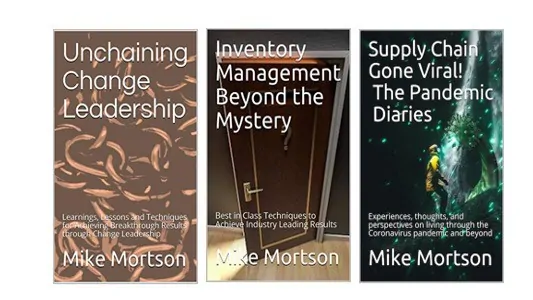Imagine what the future will look like in Supply Chain!
We don’t mean the near future, but the very distant future. There are articles which describe what the future of Supply Chain will be like in 2025, or even 2030.
But is that enough of a far-reaching vision to offer much more than an incremental view of what we see today based on existing technology?
Any view of the near future is more likely to describe incremental changes and incremental advancements based on the current knowledge base. But an extremely distant vision of the future is more likely to offer revolutionary ideas as to what future possibilities are.
Enabling Technologies
The technologies that we are familiar with today, whether they are already in use in our companies, aspirational capabilities or part of some far reaching strategy, provide the platform for the Supply Chain of the future. The back bone of all of it is Digital Technology:

- The Internet of Things (IoT)
- End to End Digital Connectivity
- Cloud Computing
- Blockchain
- Big Data
- Artificial Intelligence
- Predictive Analytics
- Machine Learning
- Virtual Reality
- Augmented Reality
- Voice Activated Technology
- Wearable Devices
- Robotics
- 3D Printing and On Demand, Additive Manufacturing
- Cyber Security
- Autonomous Vehicles
- Drones
- Software as a Service (SaaS)
- and much more
This is a lot of technological capability at hand, with much more yet to be invented and introduced to the world. So how can all of this be used to shape what happens in Supply Chain?
Driving Philosophies and Paradigm Shifts
In order to imagine what the Digital Supply Chain of the future will look like we need to consider and articulate what the underlying philosophies, beliefs, and paradigms will be.
In doing so we must all suspend disbelief and think beyond the immediate hurdles, barriers, challenges and sacred cows that leave people stuck and unable to think beyond the current reality of their jobs, their companies, and their industries.
1. The “Don’t Touch” Supply Chain
Our first belief is that the future Supply Chain must be based on a “Don’t Touch” philosophy, which we discussed in our article A Don’t Touch Strategy Will Dramatically Lean Out Your Supply Chain!
Fundamentally the “Don’t Touch” philosophy means that we must design all aspects of the Supply Chain with the intent of mitigating, if not eliminating entirely, any handling and touching of materials, goods, paper, and data.
This is completely consistent with a Lean approach which underscores the need to eliminate waste. Any handling or movement of materials must be analyzed so as to eliminate touching the goods at all costs. Techniques such as drop shipping and full case fulfillment and replenishment eliminate several handoffs and touches throughout any Supply Chain.
The same applies to data. Think about how much duplicate data entry occurs within a company to record various pieces of materials and product information. Now consider that this same data entry occurs between all suppliers, customers and logistics carriers.
And consider forecast data, planning parameters, cost and price information, materials details and specifications, purchase orders (and all of the accompanying changes and updates), bills of lading, labels, inventory records, and much more. All of this information is entered into systems and spreadsheets across every link in a given Supply Chain. Some of it is automatically done but much of it is manually entered. And the exact same data is entered into different systems and on to different spreadsheets multiple times.
What a waste!
In all cases the Supply Chain of the future must be so streamlined that there is no duplicated handling of goods or data. “Don’t Touch” must be the prevailing philosophy!
2. Intellectual Automation
When we think of the future we all naturally think about machine automation. Robots, drones, conveyance and automatic sortation are elements of present day and future supply chains that will continue to evolve.
But a critical new driving philosophy in the Supply Chain of the future will be Intellectual Automation.
Artificial Intelligence, Predictive Analytics, and Voice Activated Technology are key enablers that will allow for Intellectual Automation.
By Intellectual Automation we mean the automation of all basic Supply Chain activities. Data gathering and data entry, the creation and manipulation of spreadsheets and reports, the production and completion of forms, all purchase order and invoice management activities, product data management, and more are activities that should all be automated in the future.
Additionally the ability of computers to learn and analyze will allow for the creation of information analyzed and presented to those in need. Any requests for specific analyses, charts, reports or even decision recommendations need only be asked of an Artificial Intelligence based engine that will provide all of that information in a rapid and highly optimized fashion.
3. The Holistic, End to End View of the Supply Chain
Today it is mostly a pipe dream for people to really have a complete view of their Supply Chain.
But in the future that will be a reality. Given the enabling technologies which we’ve discussed everything, I mean everything, in the Digital Supply Chain will be connected.

When you consider the level of connectivity that you personally today you can see that this is possible and foreseeable. With your smartphone in hand you are connected to anyone and everyone. You can be tracked, sensed, pinged and traced.
In the Supply Chain everything will be connected using this same sensing, digital technology. This will include every step and process within the manufacturing line, warehouse or distribution centre of your company or that of one of your suppliers. It will include any of your logistics carriers and all of your customers. And it will include all of your parts or raw materials, work in process, finished goods and returns.
EVERYTHING will be electronically connected.
And it is this connectivity that will provide you with a holistic, end to end view of everything going on in your Supply Chain. Problems will be identified, and actioned, in real time anywhere in the Supply Chain. Optimal decisions, supported by Artificial Intelligence, can be made based on what if analyses and real world dynamics.
4. Supply Chain as a Service (SCaaS)
Today most companies perform most of the activities in their Supply Chain internally. Planning, Procurement, Manufacturing, Logistics, Inventory Management and more are most often activities assigned to some internal organization.
Typically this is the way that companies evolved. They wanted to control everything that they could and the best way to do that was to perform these tasks themselves. Even though most companies are experts in other activities, such as Design or Marketing, they still performed these functions internally.
In the future more and more of these activities will be outsourced to experts in their fields. Enabled by the digital technologies of the future the Supply Chain within a company is more than likely going to be a smaller organization of highly skilled, holistically focussed individuals who will make broader, more strategic decisions regarding the Supply Chain.
They will have outsourced many of the activities to other companies and their focus will be to centrally orchestrate the movement of materials and information between all nodes of their Supply Chain digitally.
This will enable companies to be highly flexible and asset light leveraging the very best capabilities of subject matter experts all around the world.
Control Towers will be prevalent as Supply Chain leaders will be able to see, and manage, how their entire Supply Chain is functioning from one digital command centre. Actually wherever these leaders are they will be able to access their control tower, whether from an office, a meeting room, a plane, a hotel room, or anywhere possible.
The same will apply to all I/T systems. There are a lot of great companies developing software to perform all Supply Chain functions. There will be no future need to develop in house, stand alone software systems. In all of this however there must be complete compatibility and interoperability between all systems and interfaces.
5. Space Age Supply Chain Skill Development
With all of this technology and all of this evolution of the Supply Chain operating paradigm there will be a need to significantly advance the skills of all those working in Supply Chain.
Instead of having people focussed on manual data entry and spreadsheet management, Supply Chain leaders of the future will be focussed on decision making based on real time data analyzed and presented by Artificial Intelligence engines.
Instead of having people calling or emailing suppliers to make changes to purchase orders or to check on deliveries, Supply Chain leaders of the future will be able to see that information intelligently presented to them online instantaneously and they will be able to initiate actions with voice commands.
Supply Chain professionals of the future will be operating with a higher order skill set. They will need to truly understand their end to end Supply Chain, not just one small aspect of the chain. They will need to understand I/T systems, end to end processes, and high level analytics. And above all they will need to be proficient in assimilating information and making highly intelligent decisions, both tactical and strategic.
This represents a Quantum Leap in the skill set from the Supply Chain of today. In the future everyone in Supply Chain will be operating at a much higher level!
Conclusion
It’s a very exciting time to be a part of the Supply Chain. And the prospects for the future are tremendous.
Certainly there will be continuing advances in technology which will only advance, if not supplant, the enabling technologies which we have discussed here.
Regardless, the fundamental Driving Philosophies and Paradigm Shifts that we have discussed here will only continue to be reinforced, irrespective of technological advancements.
So what do you think?
What do you imagine the Supply Chain of the future will look like?


 EBOOKS HERE
EBOOKS HERE
Great Article,
2020 is an era of Globalization, the world is almost changing gradually also supply chain management is also taking part into it, there are some future trends in SCM such as Blockchain technology & Internet of Things taking Supply Chain management to the next level.